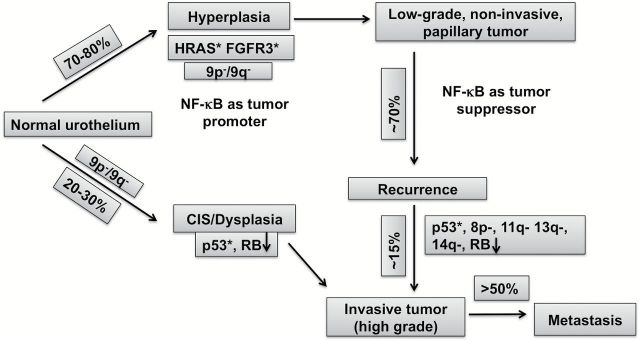Figure 4.

Hypothetical model of NF-κB in bladder tumorigenesis. Urothelial tumors arise via two divergent phenotypic pathways. Some transform from urothelial hyperplasia to low-grade noninvasive superficial papillary tumors whereas the more aggressive form evolves from flat, high-grade carcinoma in situ to highly invasive tumors. On the basis of the pro- and antisurvival functions of NF-κB, differential roles have been attributed to NF-κB in the two phenotypic pathways implicated in bladder cancer. Modified from Netto et al. (59).
